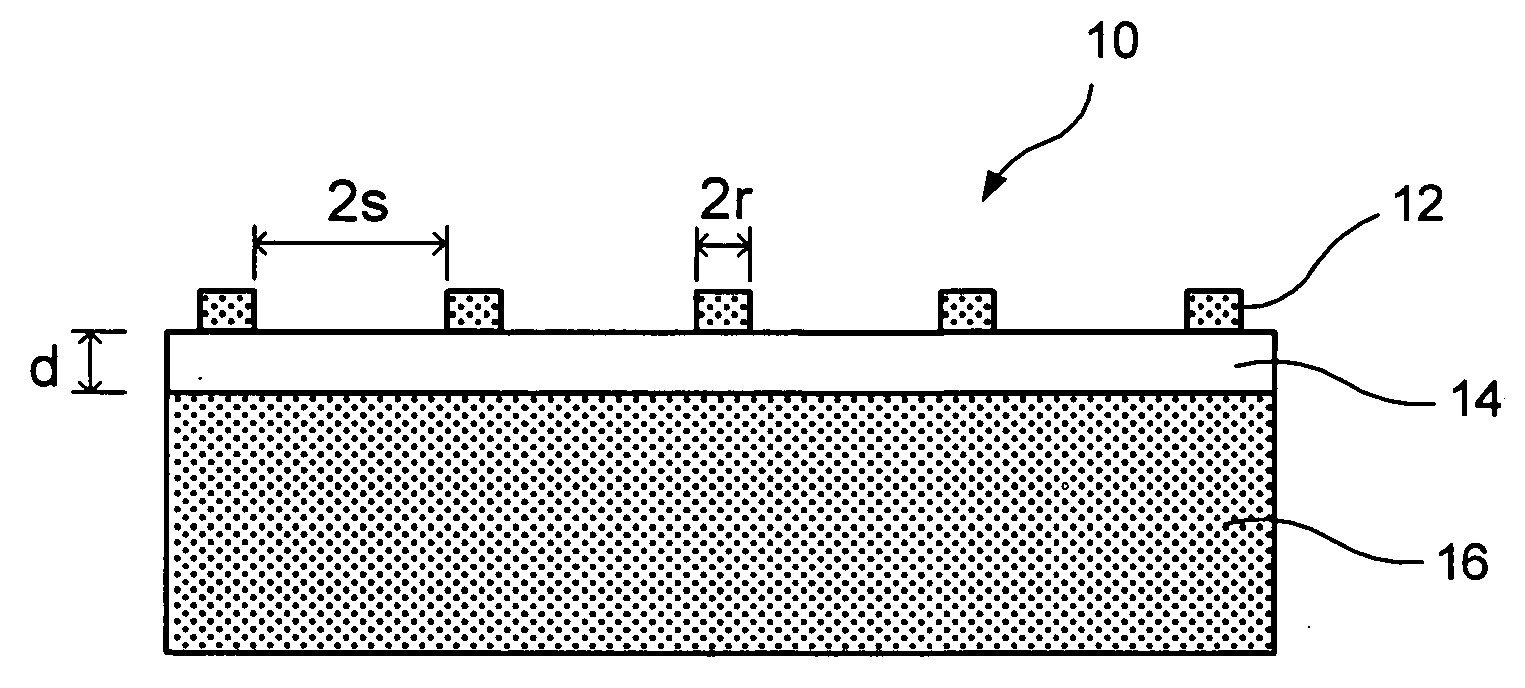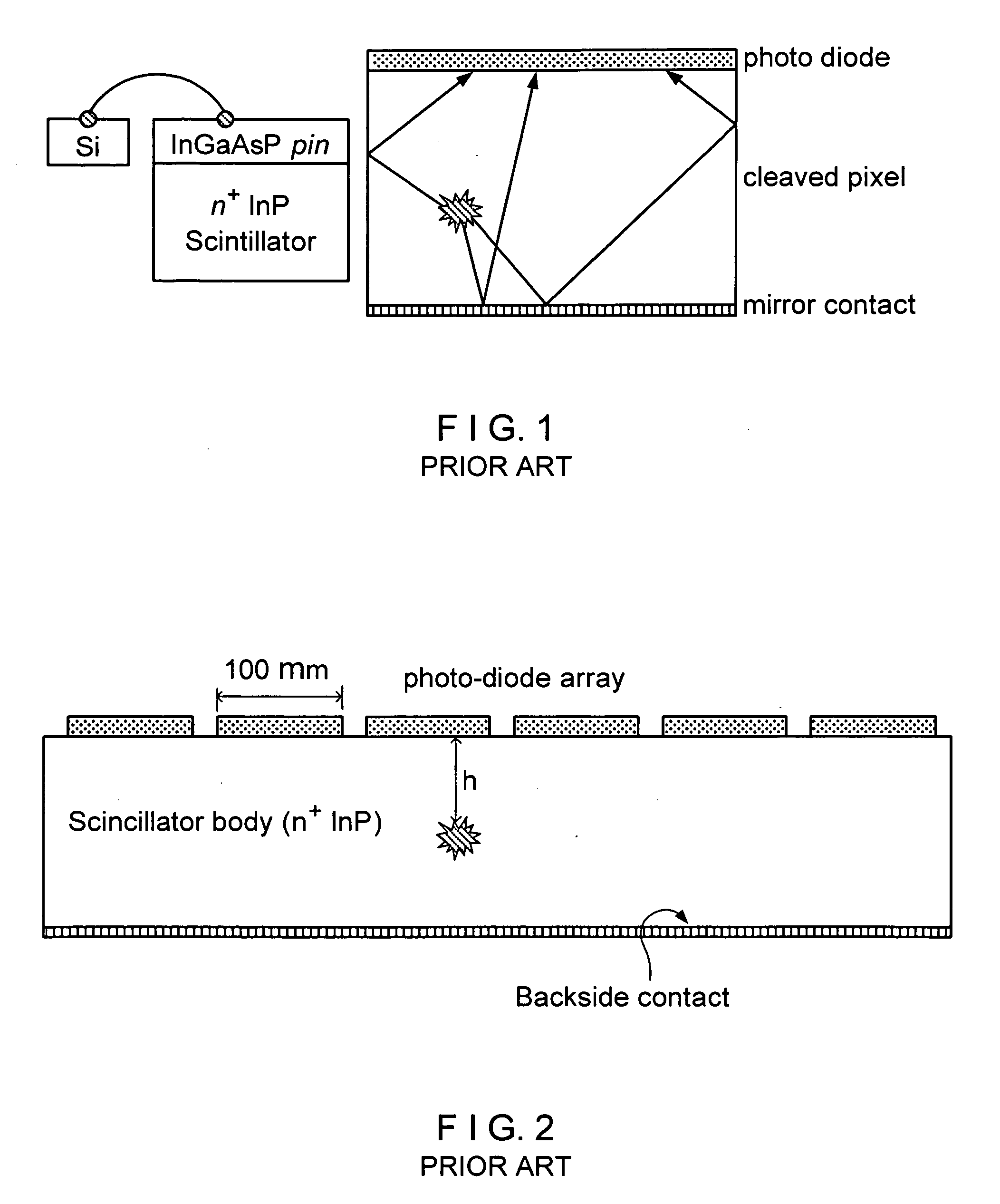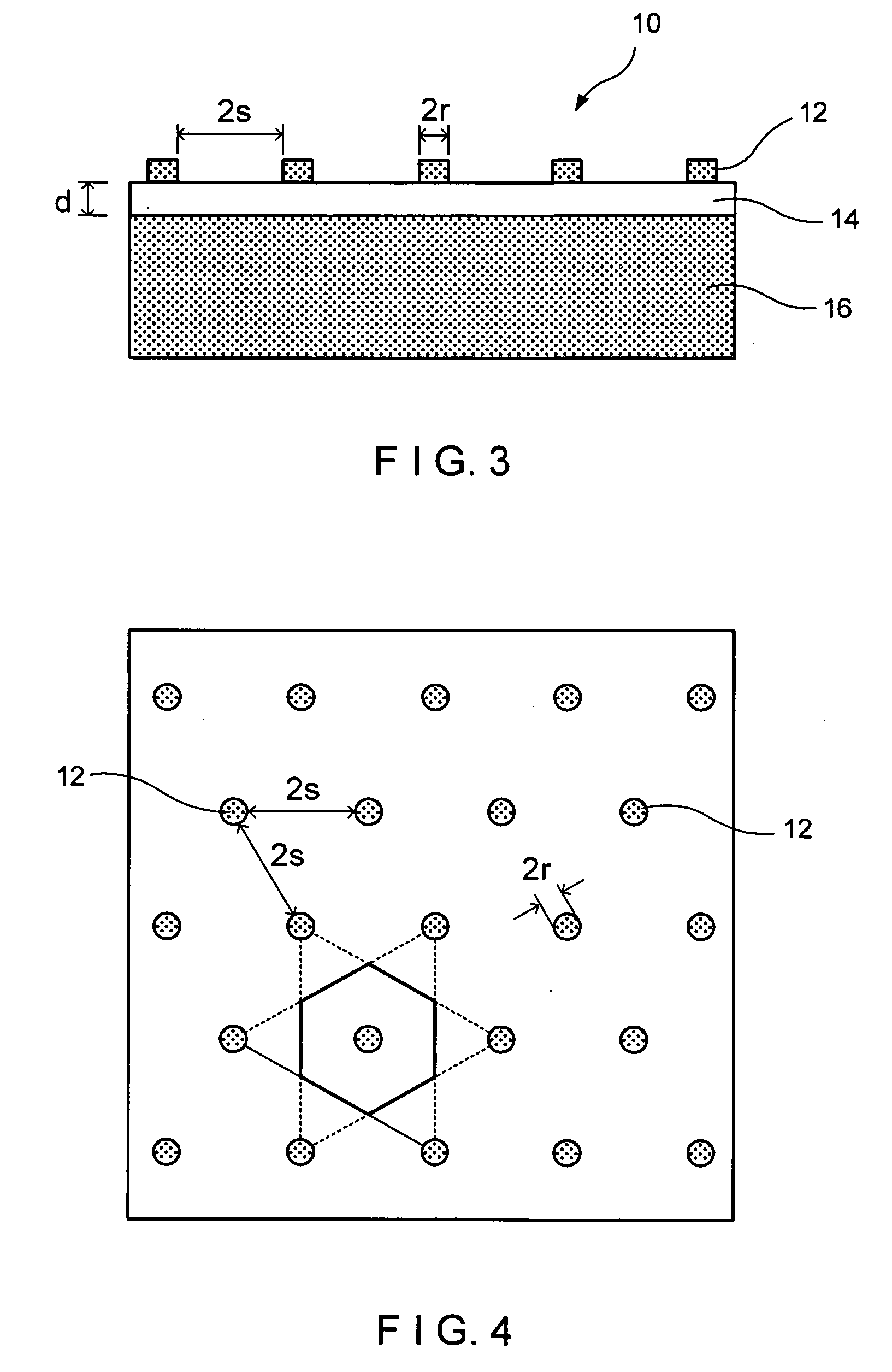Large-area pin diode with reduced capacitance
a pin diode and capacitance reduction technology, applied in the field of high-energy radiation detectors, can solve the problems of large capacitance that is difficult to handle by a readout circuitry, inefficient external detectors, and inefficiency of collection, so as to improve the signal to noise ratio, reduce the capacitance of the pixel's pin diode, and improve the effect of fom
- Summary
- Abstract
- Description
- Claims
- Application Information
AI Technical Summary
Benefits of technology
Problems solved by technology
Method used
Image
Examples
Embodiment Construction
[0033]Referring now to FIGS. 3 and 4, illustrating essential features of one aspect of the invention and showing a large PIN diode 10 with small capacitance. The cross-section of the PIN diode is depicted in FIG. 3, where collector contacts 12 (p-type, for example) are shown disposed on the intrinsic (depleted) region 14 disposed on the n region 16. The surface between the contacts is passivated by dielectric, such as for example, a silicon nitride layer. FIG. 4 illustrates the top view of the contacts.
[0034]The total area of the collector contacts 12 is much smaller than the area of the diode and the contacts are spaced from each other by the distance 2s. Such distance should be not too large so that the travel time of holes over the distance s is much smaller than the lifetime of holes in the intrinsic region. All contacts 12 are connected together by thin metallic lines (not shown in FIGS. 3 and 4), which are disposed over a dielectric layer covering all contacts 12 and accessing...
PUM
 Login to View More
Login to View More Abstract
Description
Claims
Application Information
 Login to View More
Login to View More - R&D
- Intellectual Property
- Life Sciences
- Materials
- Tech Scout
- Unparalleled Data Quality
- Higher Quality Content
- 60% Fewer Hallucinations
Browse by: Latest US Patents, China's latest patents, Technical Efficacy Thesaurus, Application Domain, Technology Topic, Popular Technical Reports.
© 2025 PatSnap. All rights reserved.Legal|Privacy policy|Modern Slavery Act Transparency Statement|Sitemap|About US| Contact US: help@patsnap.com



